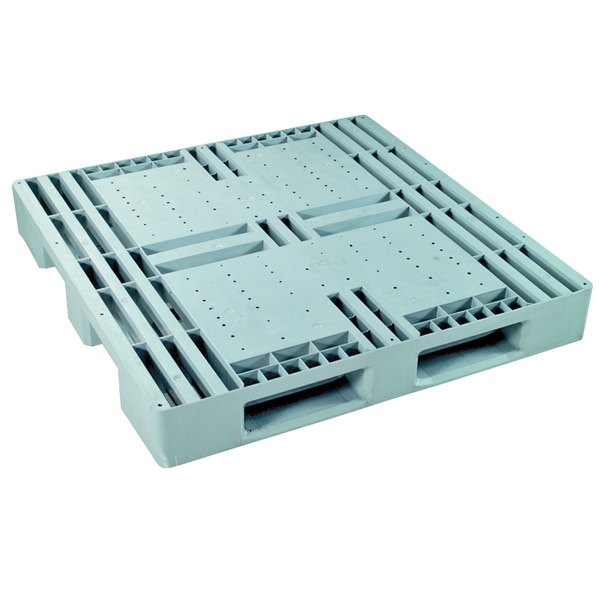Versatility and Advantages of Plastic Pallets in Modern Logistics
Date Posted:23 July 2024
Plastic pallets have revolutionized the logistics industry, offering a durable, hygienic, and cost-effective alternative to traditional wooden pallets. Their versatility and numerous benefits make them indispensable in various sectors, from food...
In the realm of logistics and supply chain management, pallets are fundamental tools that facilitate the efficient handling, storage, and transportation of goods. Among the various types of pallets available, plastic pallets have gained significant traction due to their numerous advantages over traditional wooden pallets. This article explores the evolution, types, benefits, and future trends of plastic pallets, underscoring their pivotal role in modern logistics.
The Evolution of Plastic Pallets
The use of pallets dates back to the early 20th century, primarily made of wood. However, as industries expanded and logistical needs grew more complex, the limitations of wooden pallets, such as susceptibility to pests, moisture, and breakage, became apparent. This led to the innovation of plastic pallets in the mid-20th century, offering a more durable and hygienic alternative.
Initially, plastic pallets were used in specialized industries such as pharmaceuticals and food and beverage, where hygiene and contamination prevention were paramount. Over time, advancements in plastic manufacturing processes, such as injection molding and blow molding, have enhanced the durability, strength, and versatility of plastic pallets, making them suitable for a wide range of applications.
Types of Plastic Pallets
Plastic pallets come in various designs and sizes to meet different logistical requirements. They can be broadly categorized into the following types:
- Nestable Pallets: These pallets are designed to nest within each other when empty, saving space during storage and transportation. They are ideal for applications where space efficiency is crucial.
- Stackable Pallets: Featuring a robust design that allows them to be stacked without damaging the goods on the lower pallets, these are perfect for storage in warehouses.
- Rackable Pallets: Built to handle heavy loads and designed for use on pallet racks, these pallets provide excellent support and stability.
- Export Pallets: Lightweight and cost-effective, these pallets are designed for one-way shipping, reducing the cost of return logistics.
- Hygienic Pallets: Made from food-grade plastic, these pallets are designed for industries where sanitation is critical, such as pharmaceuticals and food processing.
Benefits of Plastic Pallets
The adoption of plastic pallets offers several advantages that make them a preferred choice in various industries:
- Durability and Longevity: Plastic pallets are resistant to impact, moisture, and chemical corrosion, ensuring a longer lifespan compared to wooden pallets. This durability translates to reduced replacement costs and a better return on investment.
- Hygiene and Cleanliness: Unlike wooden pallets, plastic pallets do not absorb moisture, making them resistant to mold, fungi, and bacterial growth. This makes them ideal for industries with stringent hygiene requirements.
- Consistency and Reliability: Plastic pallets are manufactured to precise specifications, ensuring uniformity in size and shape. This consistency enhances compatibility with automated handling systems and improves operational efficiency.
- Safety: Plastic pallets do not have nails, splinters, or sharp edges, reducing the risk of injuries to workers. Their lightweight nature also makes them easier to handle, further enhancing workplace safety.
- Environmental Impact: Many plastic pallets are made from recycled materials and are themselves recyclable at the end of their life cycle. This contributes to sustainability efforts and reduces the environmental footprint of logistics operations.
- Cost-Effectiveness: While the initial cost of plastic pallets may be higher than wooden pallets, their longevity, reduced maintenance, and lower replacement rates make them cost-effective in the long run.
Future Trends and Innovations
The future of plastic pallets looks promising, driven by continuous innovations and a growing emphasis on sustainability. Key trends shaping the future of plastic pallets include:
- Advanced Materials: The development of new plastic compounds and composite materials is enhancing the strength, durability, and environmental friendliness of plastic pallets. Biodegradable and bio-based plastics are also emerging as viable alternatives.
- Smart Pallets: The integration of IoT technology is transforming plastic pallets into smart pallets. Embedded sensors can monitor various parameters such as load weight, temperature, and location, providing real-time data for better supply chain management.
- Customization and Design: Advances in manufacturing technology allow for greater customization of plastic pallets to meet specific industry needs. Modular designs and innovative features are making plastic pallets more versatile and functional.
- Sustainability Initiatives: As businesses strive to reduce their carbon footprint, the demand for eco-friendly plastic pallets made from recycled and recyclable materials is increasing. Companies are also exploring take-back programs to recycle used pallets and reduce waste.
Plastic pallets have revolutionized the logistics industry, offering a durable, hygienic, and cost-effective alternative to traditional wooden pallets. Their versatility and numerous benefits make them indispensable in various sectors, from food and pharmaceuticals to manufacturing and retail. As technology continues to advance and sustainability becomes a priority, plastic pallets are poised to play an even more significant role in modern logistics. Investing in plastic pallets is not just a strategic decision for operational efficiency; it is also a commitment to a sustainable and innovative future in supply chain management.


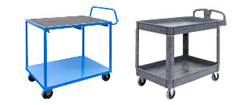

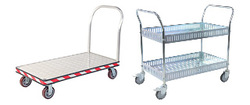

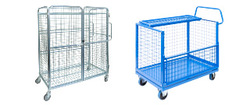
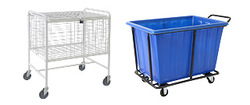
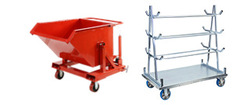

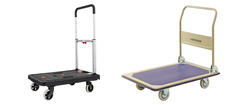
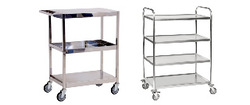
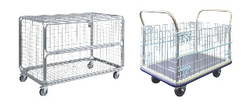

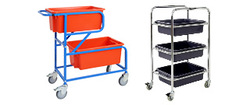

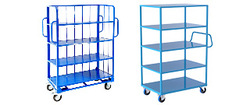

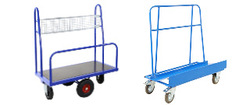


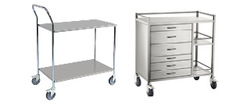
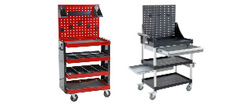
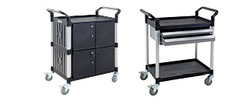

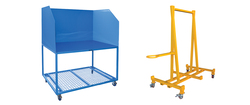



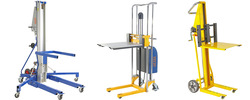



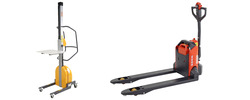
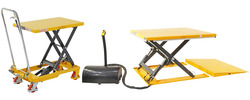

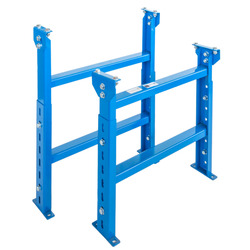
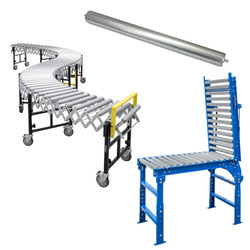
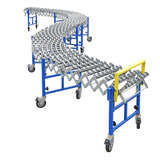



















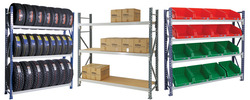
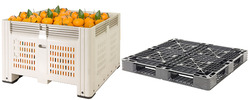

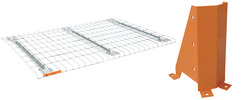
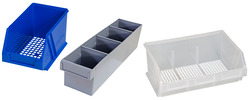

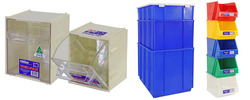

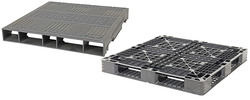


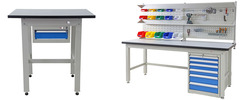
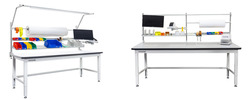






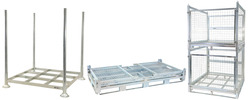
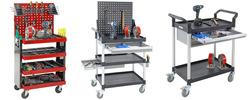






















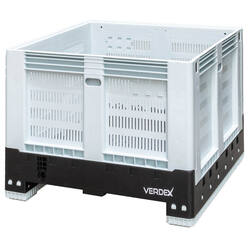




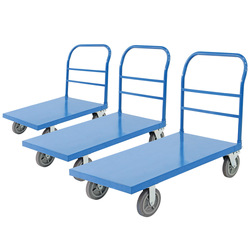
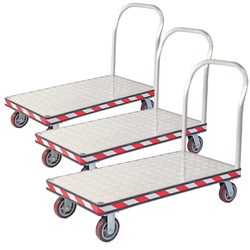








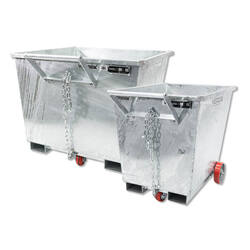












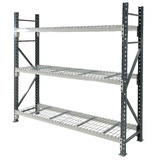





 Trolleys / Hand Trucks
Trolleys / Hand Trucks 2 Tier Trolleys
2 Tier Trolleys 3 Tier Trolleys
3 Tier Trolleys Aluminium Trolleys
Aluminium Trolleys Appliance & Hand Trucks
Appliance & Hand Trucks Cage Trolleys
Cage Trolleys Cleaning Carts & Trolleys
Cleaning Carts & Trolleys Construction Trolleys
Construction Trolleys Dollies
Dollies Foldable Trolleys
Foldable Trolleys Hospital Trolleys
Hospital Trolleys Laundry/Linen Trolleys
Laundry/Linen Trolleys Load Skates & Tow Tugs
Load Skates & Tow Tugs Mail / Office Trolleys
Mail / Office Trolleys Multi Purpose Trolleys
Multi Purpose Trolleys Multi-Tier Shelf Trolleys
Multi-Tier Shelf Trolleys Order Picking Trolleys
Order Picking Trolleys Panel Cart Trolleys
Panel Cart Trolleys Platform Trolleys
Platform Trolleys Powered Trolleys
Powered Trolleys Stainless Steel Trolleys
Stainless Steel Trolleys Tool Trolleys
Tool Trolleys Utility Carts
Utility Carts Warehouse Trolleys
Warehouse Trolleys Custom Trolleys
Custom Trolleys Lifting Equipment
Lifting Equipment Forklift Attachments
Forklift Attachments Jib Attachments
Jib Attachments Lifting Hoists & Pallet Hooks
Lifting Hoists & Pallet Hooks Manual Stackers & Lifters
Manual Stackers & Lifters Pallet Jacks
Pallet Jacks Pallet Lifters
Pallet Lifters Pallet Rotators & Dispenser
Pallet Rotators & Dispenser Powered Pallet Trucks & Electric Lifters
Powered Pallet Trucks & Electric Lifters Scissor Lift Trolleys and Tables
Scissor Lift Trolleys and Tables Conveyor Equipment
Conveyor Equipment Conveyor Frames
Conveyor Frames Conveyor Stands
Conveyor Stands Roller Conveyors
Roller Conveyors Skate Wheel Conveyors
Skate Wheel Conveyors Access Equipment
Access Equipment Container & Yard Ramps
Container & Yard Ramps Step Stools & Ladders
Step Stools & Ladders Work Platforms & Crane Cages
Work Platforms & Crane Cages Drum Handling
Drum Handling Drum Storage & Bunding
Drum Storage & Bunding Drum Trolleys & Lifters
Drum Trolleys & Lifters Forklift Drum Handling
Forklift Drum Handling Containment & Spillage
Containment & Spillage Aerosol Cans Storage Cages
Aerosol Cans Storage Cages Bunded Pallets & Storage
Bunded Pallets & Storage Corrosive Goods Storage Cabinets
Corrosive Goods Storage Cabinets Flammable Liquid Cabinets
Flammable Liquid Cabinets Forklift Gas Storage Cages
Forklift Gas Storage Cages Gas Cylinder Storage
Gas Cylinder Storage Site Storage
Site Storage Spill Kits
Spill Kits Stillage Cages
Stillage Cages Waste Handling
Waste Handling Bin Lifters & Tippers
Bin Lifters & Tippers Plastic Waste Bins and Carts
Plastic Waste Bins and Carts Steel Waste and Tipping Bins
Steel Waste and Tipping Bins Storage Equipment
Storage Equipment Heavy Duty Cabinets & Benches
Heavy Duty Cabinets & Benches Heavy Duty Shelving
Heavy Duty Shelving Mega Bins & Pallets
Mega Bins & Pallets Packing Benches
Packing Benches Pallet Racking Accessories
Pallet Racking Accessories Parts Trays & Stor-Pak Bins
Parts Trays & Stor-Pak Bins Pegboard & Louvre Panels
Pegboard & Louvre Panels Plastic Bins
Plastic Bins Plastic Handling Solutions Bins
Plastic Handling Solutions Bins Plastic Pallets
Plastic Pallets Stack & Nest Bins
Stack & Nest Bins Storage Cages
Storage Cages Workplace Equipment
Workplace Equipment Workbenches
Workbenches Modular Workbenches
Modular Workbenches Electric Height-Adjustable Workbenches
Electric Height-Adjustable Workbenches Floor Matting
Floor Matting Industrial Weighing Scales
Industrial Weighing Scales Pallet Wrapping & Packaging Machinery
Pallet Wrapping & Packaging Machinery Ramps
Ramps Stationery Cupboards
Stationery Cupboards Storage and Stillage Cages
Storage and Stillage Cages Tool Trolleys
Tool Trolleys Tooling Cabinets
Tooling Cabinets Wheelie Bins
Wheelie Bins Workshop Equipment
Workshop Equipment Safety Equipment
Safety Equipment Gloves and PPE
Gloves and PPE Pallet Rack Post Protectors
Pallet Rack Post Protectors Safety Barriers & Bollards
Safety Barriers & Bollards Safety Knives & Cutters
Safety Knives & Cutters Signs and Traffic Supplies
Signs and Traffic Supplies Tool & First Aid Boxes
Tool & First Aid Boxes Construction Equipment
Construction Equipment Concrete Equipment
Concrete Equipment General Site Equipment
General Site Equipment Lifting Equipment
Lifting Equipment Site Storage
Site Storage Waste
Waste  MHA's Specials
MHA's Specials

